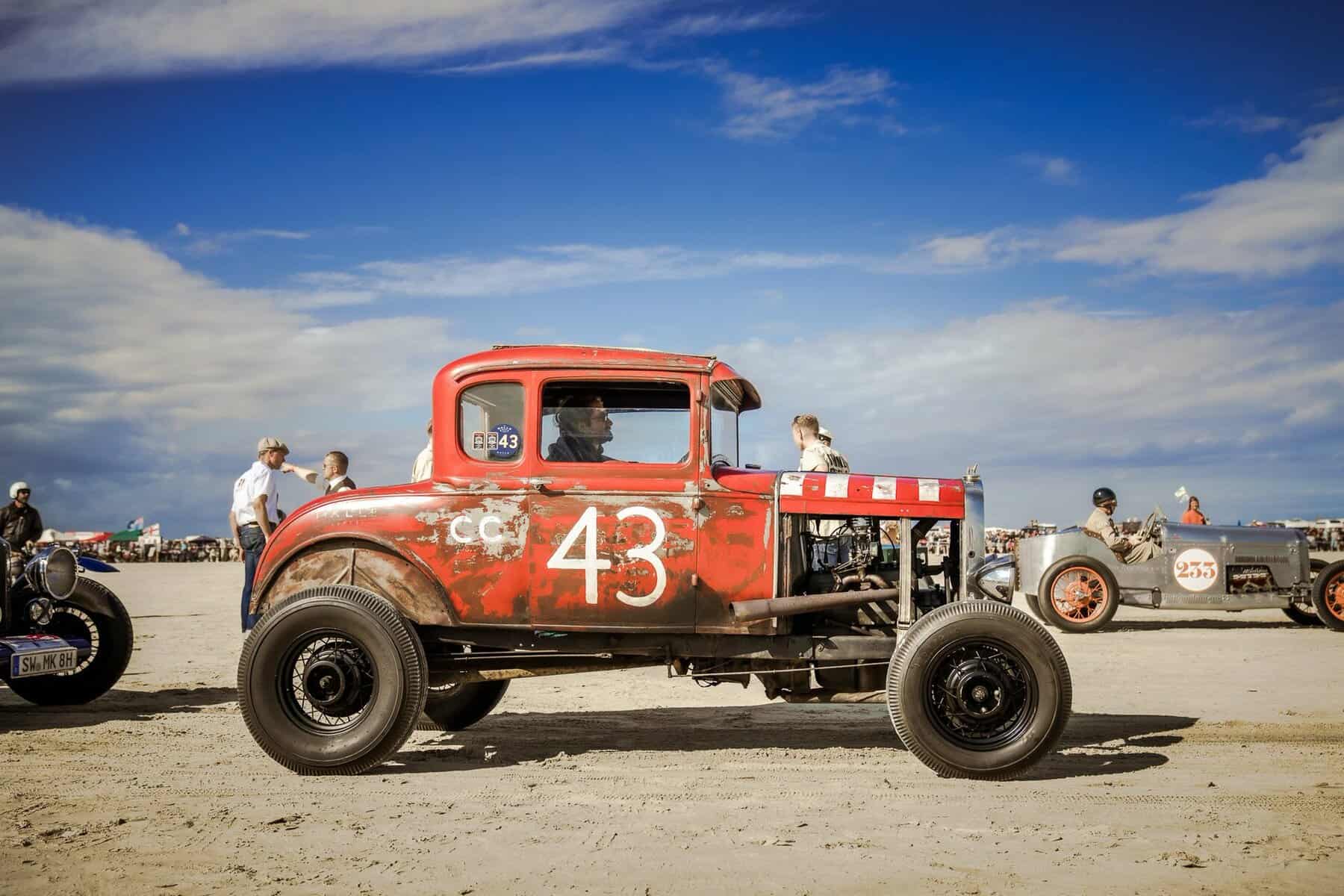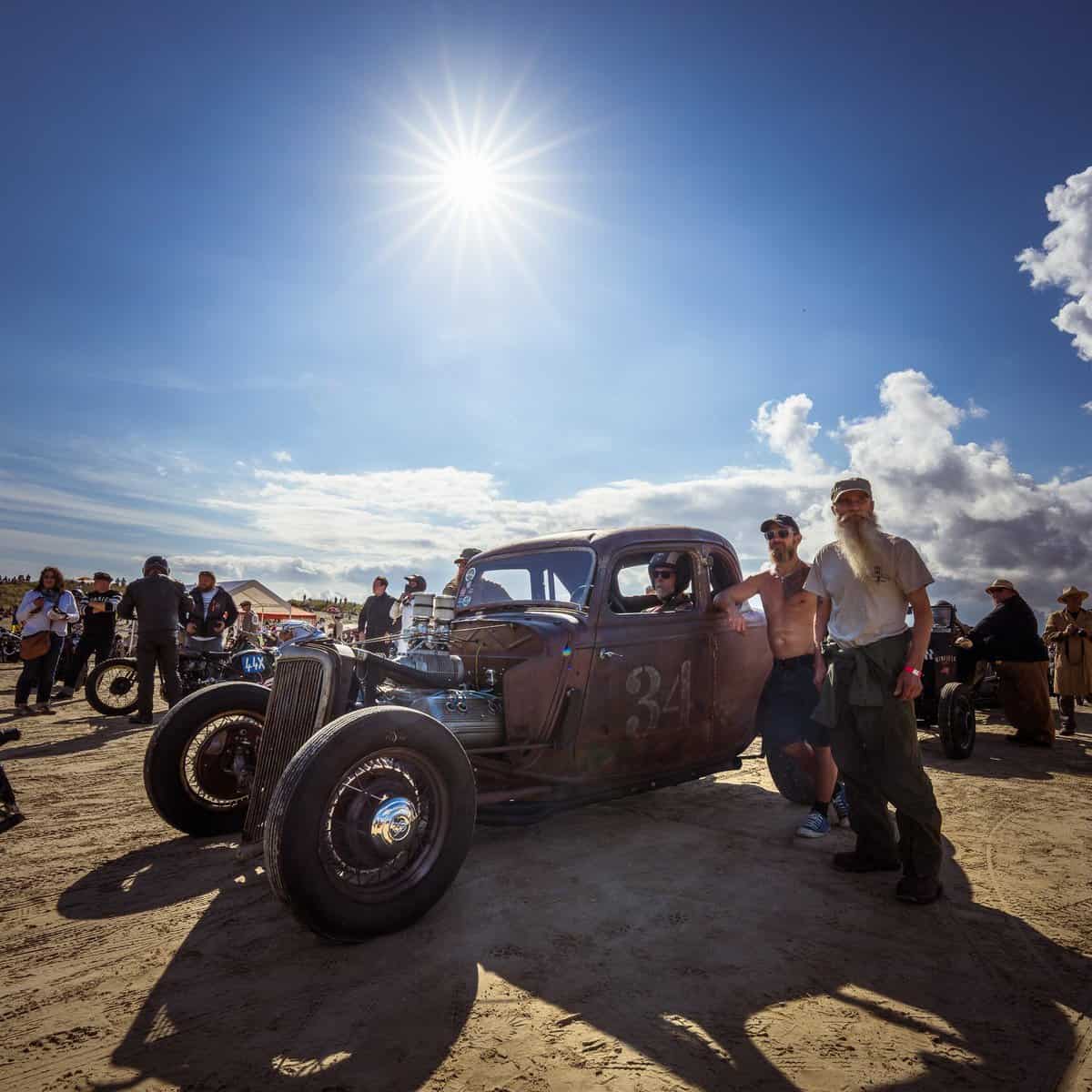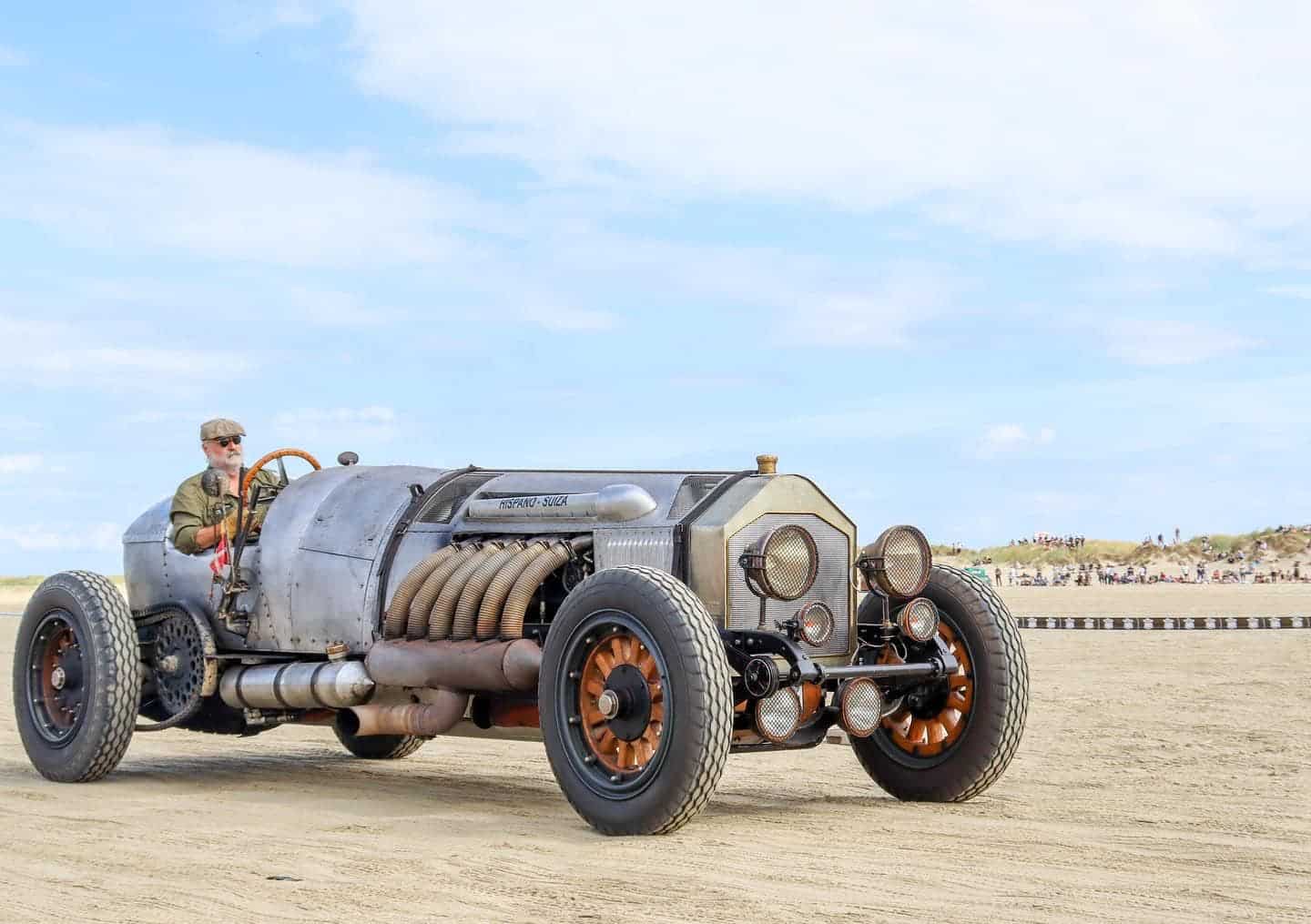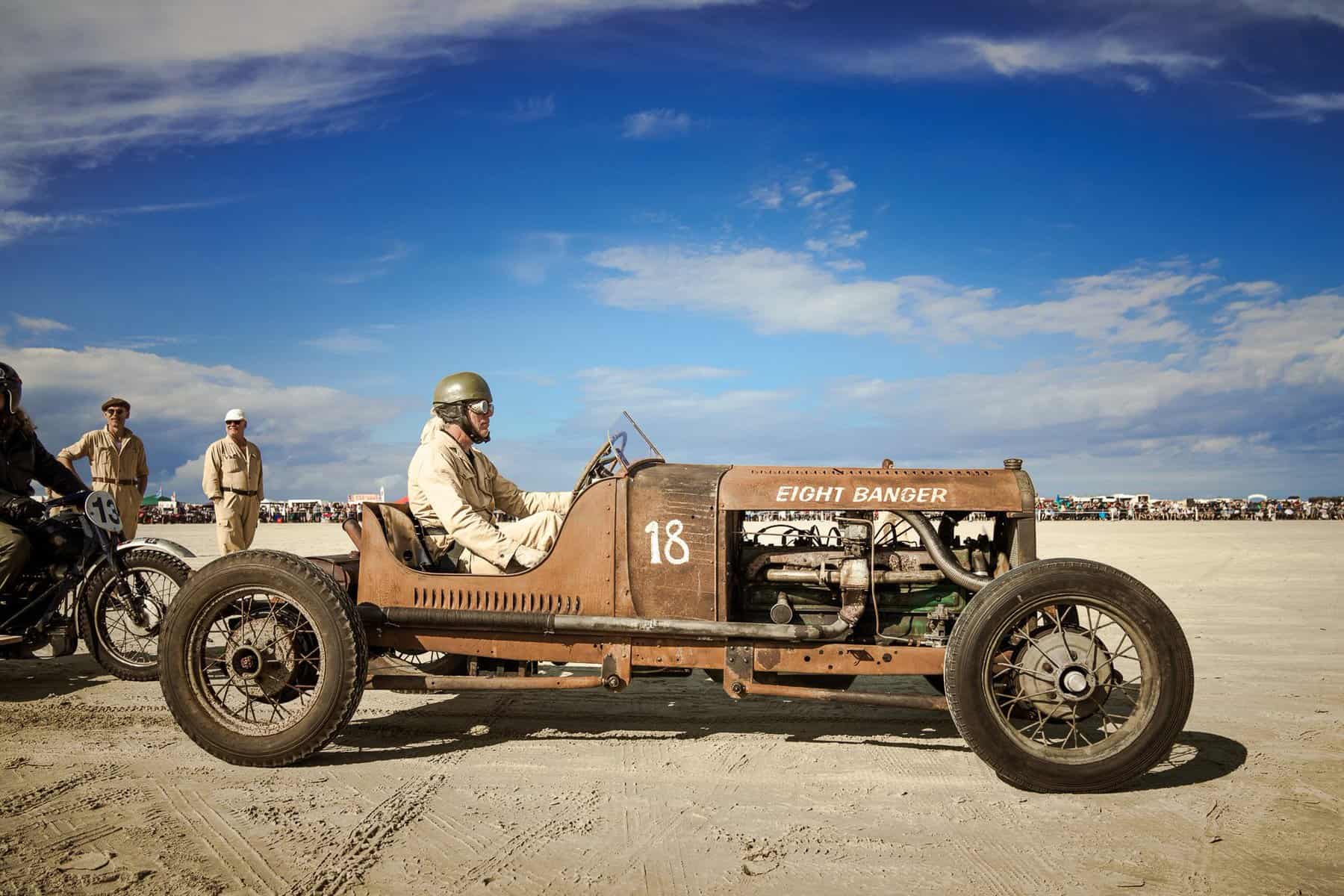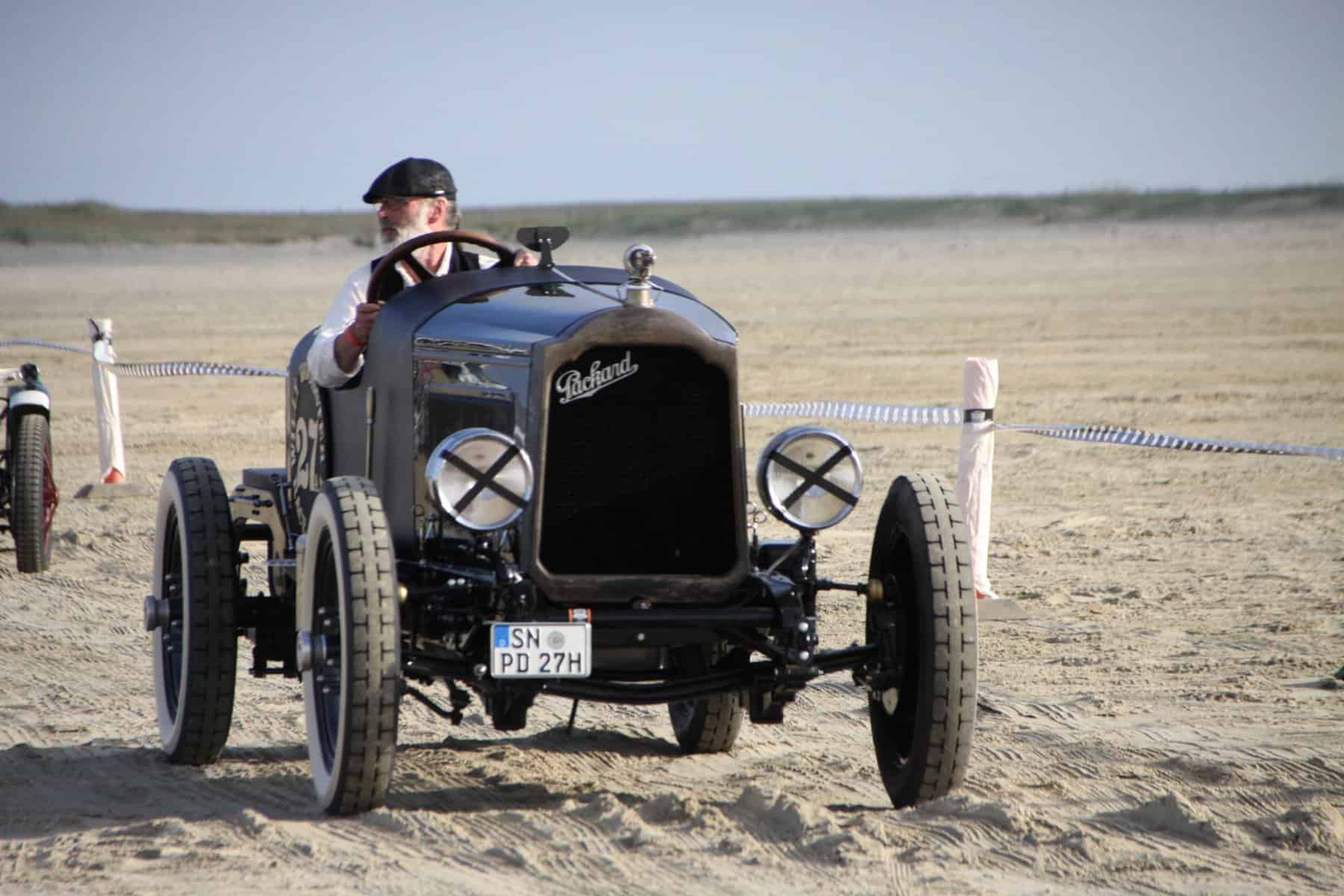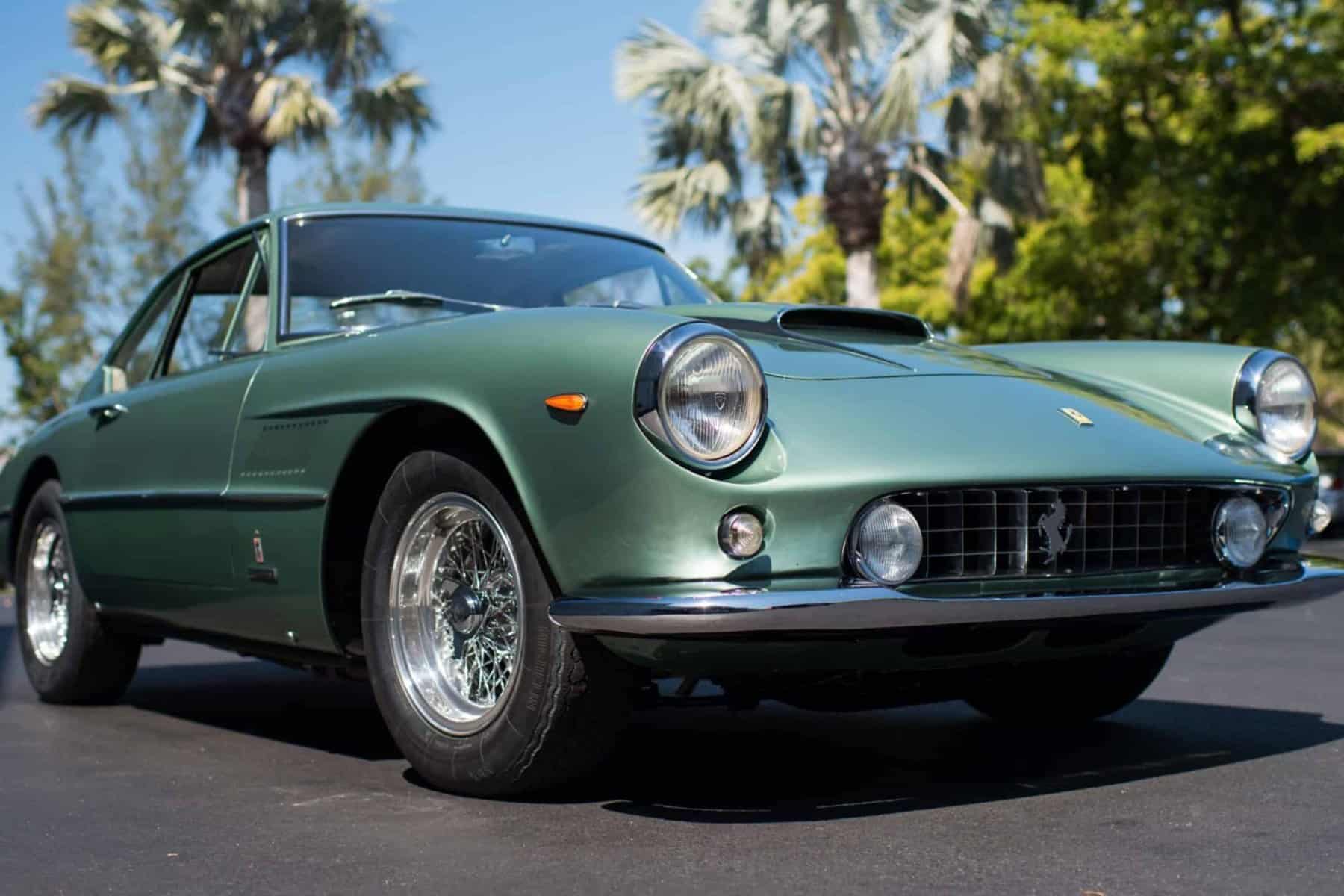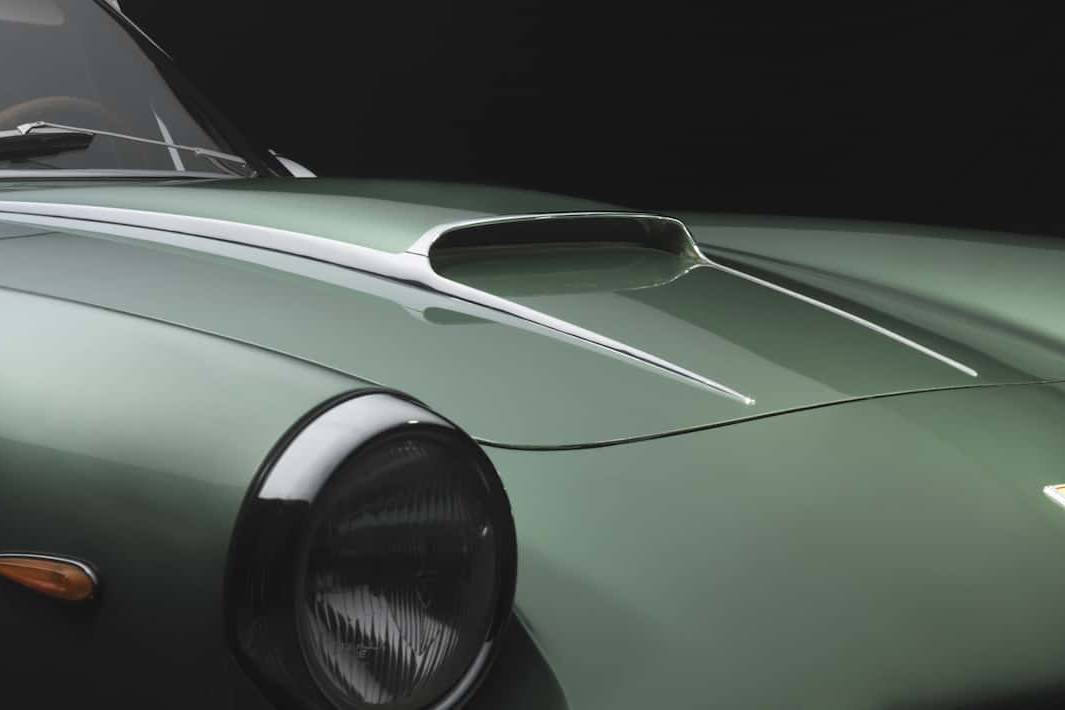Rømø Beach Races
Impressive skill and great fun on Denmark’s famous sand
BY: PETER STEVENS
Peter Stevens is one of the world’s best-known and most sought-after automotive designers. He is a consultant designer who is committed to the vital importance of design education. Alongside his consultancy, he lectures internationally and was until recently Visiting Professor at London’s Royal College of Art. Professor Stevens is well known as the designer of the acclaimed McLaren F1 road car which marked a paradigmatic shift in high performance car design. Produced between 1993 and 1997, the car remains extraordinarily influential.
When I first visited Denmark, probably thirty years ago, I was unkind enough to suggest that the Danes appeared to cut their grass with nail scissors, such was the evident regard that these stylish people have for their environment. Well, it still looks like that.
People have been beach racing since the earliest days of auto racing – a long, relatively flat surface, clear of obstacles, gave a fine course where seriously high speeds were possible. Danish beach racing can trace its origins back to August 23, 1919, when Sven Simmelkaer organized the first event, after the beach on the island of Fanø had been cleared of World War I mines. The races were timed over a flying kilometer, both three abreast and as single record runs. In 1923, Sir Malcolm Campbell driving his Bluebird set the fastest time to date of 240 kph (146.40 mph).
A later local press report recorded that ‘This Fanoe event, held only from 1919 to 1924, attracted some most interesting entries, including Malcolm Campbell’s 350 hp Sunbeam, a big Austro-Daimler, the Carl Jorns’ Opel and aero-engined monsters such as Edward Scarisbrick’s copy of Chitty II, his ‘Scariscrow’ with Benz engine, the Stoewer-Argus, and Denmark’s Fiat-Mercedes. In 1921 Englishman, Capt. J. F. Duff, on his 200 hp Fiat Racer ‘Mephistopheles’ beat all comers in the unlimited class. England was well represented by John Duff who took over his two Fiats, the 200 hp ‘Mephistopheles’ and his smaller 90 hp car. The events were run over a kilometre from a flying start, and it’s a good record because the Englishmen were successful in getting wins in both classes, making faster time than any others by covering the flying kilometre in 21.69 sec and beating the special German racers with ‘Mephistopheles.’”
Fastest speed for the five years of racing were:
1919 F Minoia (Fiat) 25.6 sec
1920 O Ottosen (Metallurgique) 32.0 sec
1921 J Duff (Fiat) 21.69 sec – 165.9 kmh
1922 K Joerns (Opel) 19.81 sec
1923 M Campbell (Sunbeam) 16.41 sec (World Record) – 146.40 mph
1924 K Joerns (Opel) 21.29 sec – 161.2 kmh
Campbell also set a record for the mile in 1923 at 26.14 seconds. Sadly, the following year a fifteen-year-old spectator was killed when Campbell lost a tire. That was the end of beach racing in Denmark until an enthusiastic Dane, who had a holiday home on Fanø, obtained permission to run a speed event in 2004 as a celebration of the original races. This race almost ended in disaster too. The organizer borrowed an entrant’s 8C Alfa Romeo, and, unfamiliar with the car’s center throttle, hit the gas instead of the brakes when returning to the pit area. Luckily no one was hurt, but both the Alfa and an Amilcar were damaged. Standing behind my car in the pits, I was horrified to watch the accident unfold, but the local police also saw what could have been a disaster and once again beach racing was forbidden. That was the case until 2016, when Danish beach racing was revived by Thomas Toft Bredahl and Carsten Bech with enthusiastic help from Steffen Sonnberg, Finn Andresen, and Holger Sonnberg.
Just south of Fanø on the west coast of Denmark is the island of Rømø, with two spectacular smooth beaches. Rømø is reached by a 12 kilometer two-lane causeway and is a beautiful, tranquil holiday location (at least until the hundreds of racers and thousands of spectators arrive) – but, going back to my observation of having a regard for their environment, all those people are beautifully behaved and leave the island as perfect as they found it!
For the two British entrants, myself and fellow designer Craig Callum, who worked for LEGO for a number of years, it’s a six-hour ferry trip to Holland and then a five-hundred-mile drive with the race cars on trailers! But it is well worth the effort. Technically the beaches in Denmark are part of the public road system, so Thomas and Carsten are not able to charge spectators to spectate; they have to cover their costs with entry fees (not expensive), merchandise, sponsors, and vendors. The one-eighth-mile track allows side-by-side drag-race-style competition, but such is the laid-back attitude of the Danes that you pick your own pairings for the races (all very democratic) and no one is too bothered about who wins what. But fastest times, printed the following day, are still scrutinized fairly closely. If it is weird, wacky, or bizarre, then you will find it on the Lakolk Beach between an early dawn and a late summer dusk. Strictly no overnight camping on the beach, and no rubbish left behind; two things that every visitor respects. There are two principal beaches on Rømø. Lakolck is the smaller (but still an enormous stretch of sand), and is not covered by incoming tides. The Danish military forces practice landing C-130 Hercules on the beach in the winter months, which gives an idea of the size of Lakolk. For Thomas Toft Bredahl and Carsten Bech, this is the sixth time that they have invited a very varied group of racers to join them for a day of drag racing on the sands. Something like 20,000 spectators arrive, most in pre-1960s cars and trucks. You could spend a day just looking at the spectator vehicles. Top speeds are all recorded, causing either delight or disappointment. This year’s fastest speed was 111km/h, recorded by a gloriously patinated ’34 Ford five-window S.Co.T-blown coupe with a very fine set of period Ardun OHV cylinder heads, entered by the heavily bearded Jens Nybo Hansen. Beards are pretty much compulsory among the male entrants… The obscure is always welcome on the beach, whether it’s a giant MAN TGS 33.480 6×6, which was about to set off around the world, or the 1928 Marmon T68 of Klaus Glasmacher, which he found in Uruguay in 2003 and later restored and road registered for competition in sprints and hill climbs across Europe. Also racing on the beach was the little 500cc JAP-engined Formula 3 car of Thomas Krause, built in 1947 by Svend Anderson and Bengt Peterson (Bengt was the father of Formula 1 driver and World Champion Ronnie Petersen). Buying and owning a vehicle in Denmark is an expensive business: tax on new cars starts at around 140 percent, but there is a sliding scale for importing old cars that is still very tough. What many people do is find an old vehicle chassis in a scrapyard and build their own period racer. It’s still not a cheap process, and after four years a strict annual test is required for every vehicle in the country. But this has led to some very fine-looking “evocations,” and these are very welcome on Lakolk beach. The great thing is that no one is precious about evocations, but genuine components are required. There are plenty of what we would call classic racing hot-rods, but there is a fascination in what this creative and stylish little country can make from “found” pieces. The suggestion is that if, for example, Packard or Buick had made a sporting or private entrants’ race car during the production life of the cars, this is how they might have looked and performed. This is an attitude that you can’t help but admire. These cars range from an enormous V12 Hispano Suiza airship-engined, chain drive, two-seater based on an American Le France fire engine chassis, to a superb 1927 Packard–based racer. German enthusiast Udo Müller found the chassis in an Australian auction after a private museum was almost totally destroyed in a wild fire in 2008. He built this imposing machine from the badly damaged remains that he imported.
A straight-eight 230 cubic inch Buick Series 50 that was built as a sedan in Denmark in 1933 at the GM factory in Haraldsgate was the basis for an American-style race car. The motor and chassis were salvaged and, with a two-seat aluminum body made in the late 1950s, Martin Quenkert now competes with it in speed events. The 1928 Marmon T68 of Klaus Glasmacher was found in Uruguay in 2003 and later restored, and road registered by Klaus for competition in sprints and hill climbs across Europe. While it would be possible to criticize this collection of “evocations,” as a way of enjoying competition in an old car while also preserving models that would not survive the scrapyard experience, it is both fun and impressive to see that such skills are still in place. If you want a quiet and calm holiday, do not visit Rømø during the race week – but if you love store nye venskaber (great new friendships), it’s the place for you!
Top: Craig Callum in “Old Red.” Photo: Peter Stevens.
